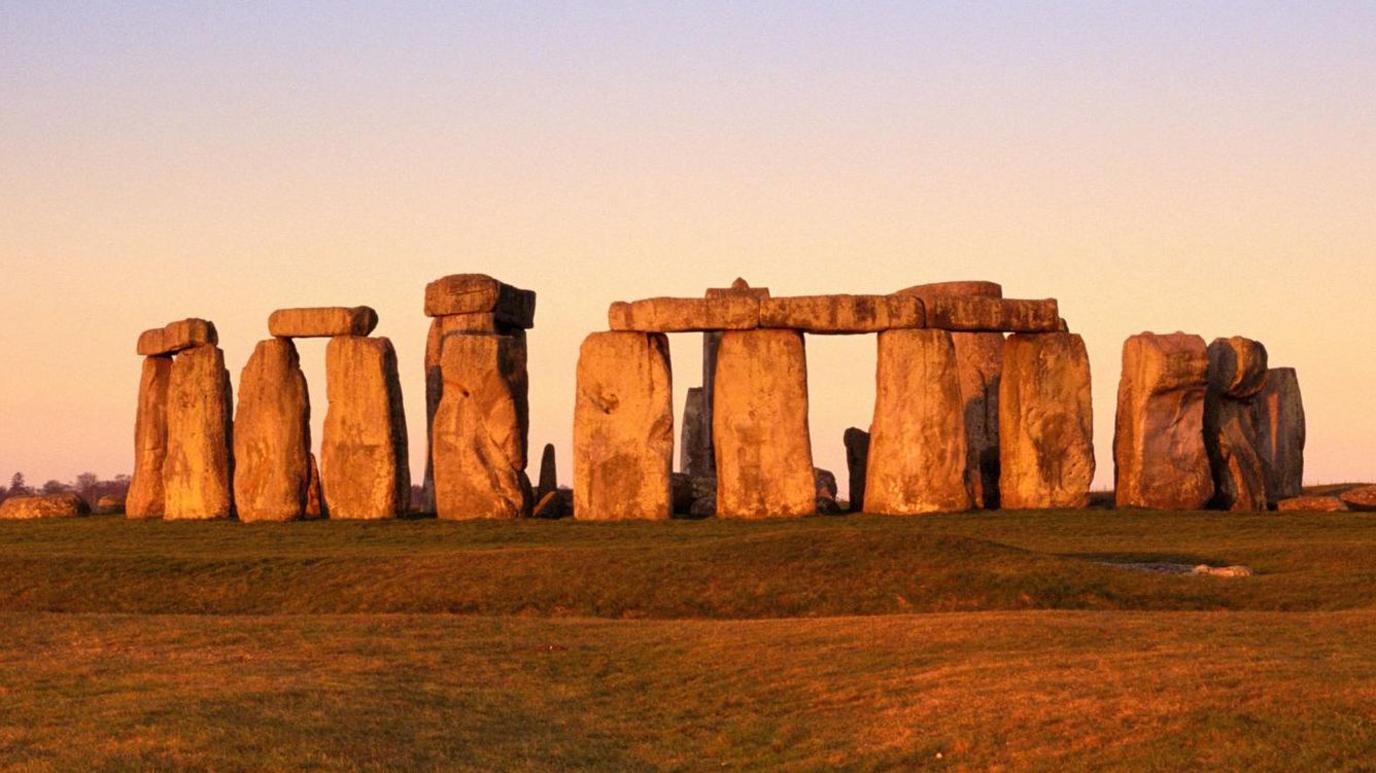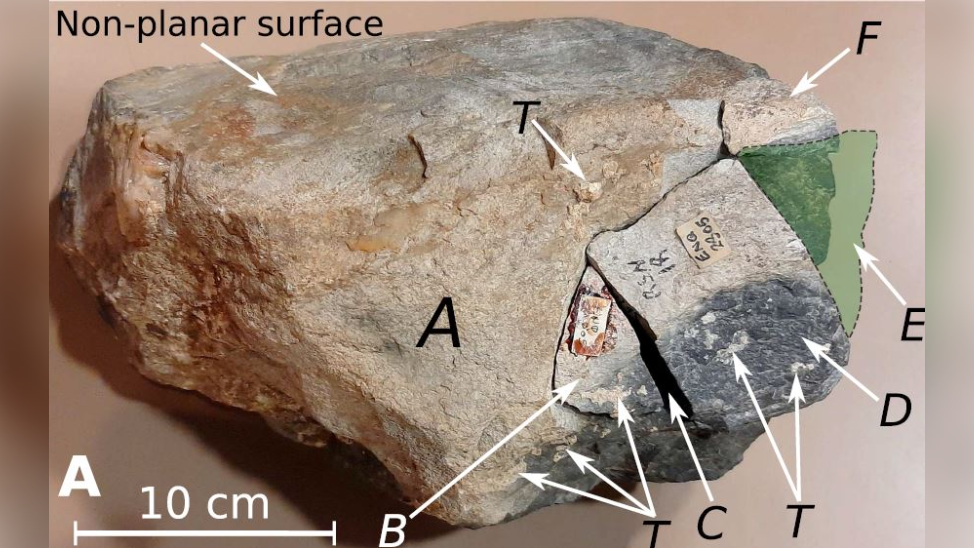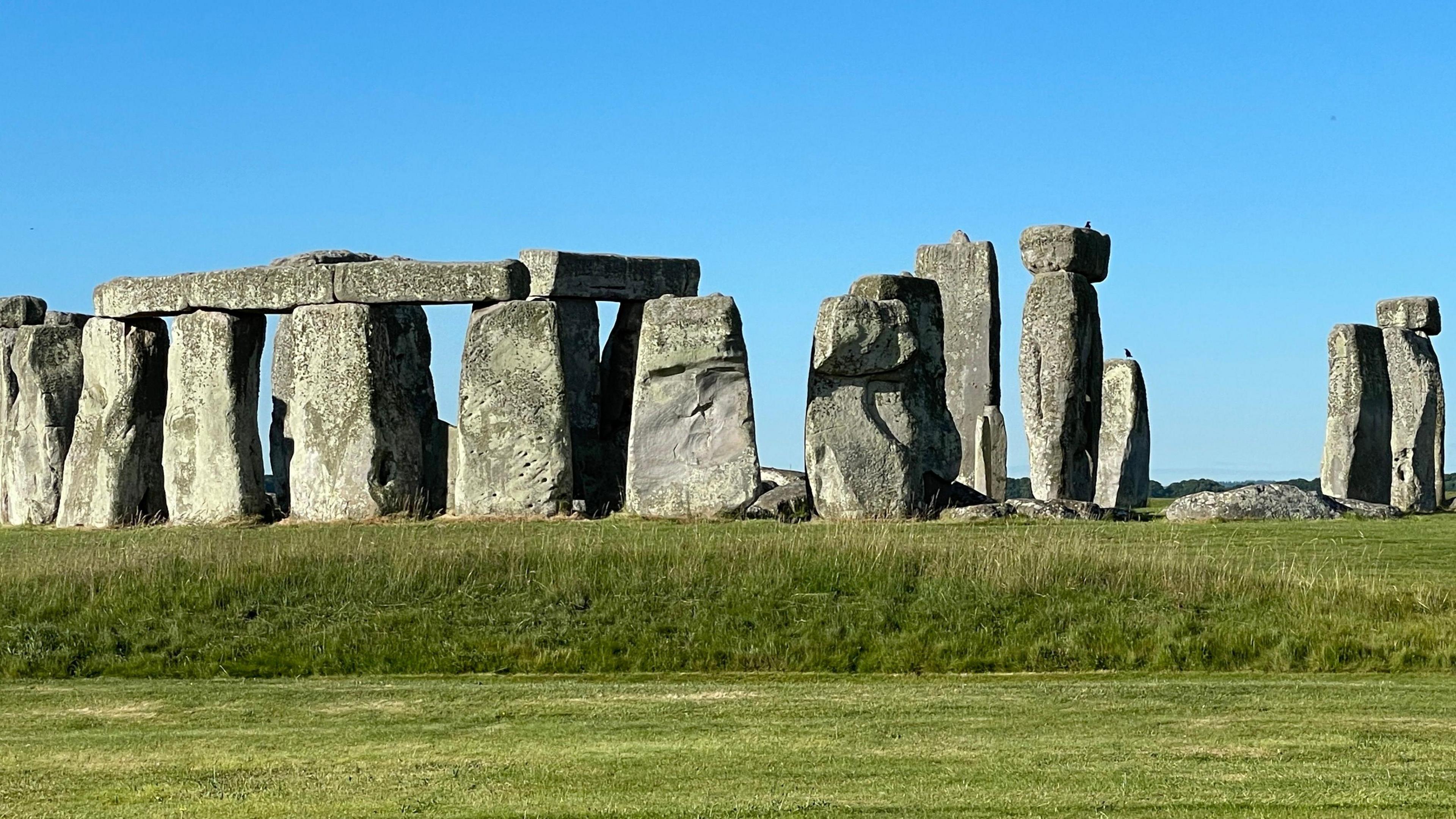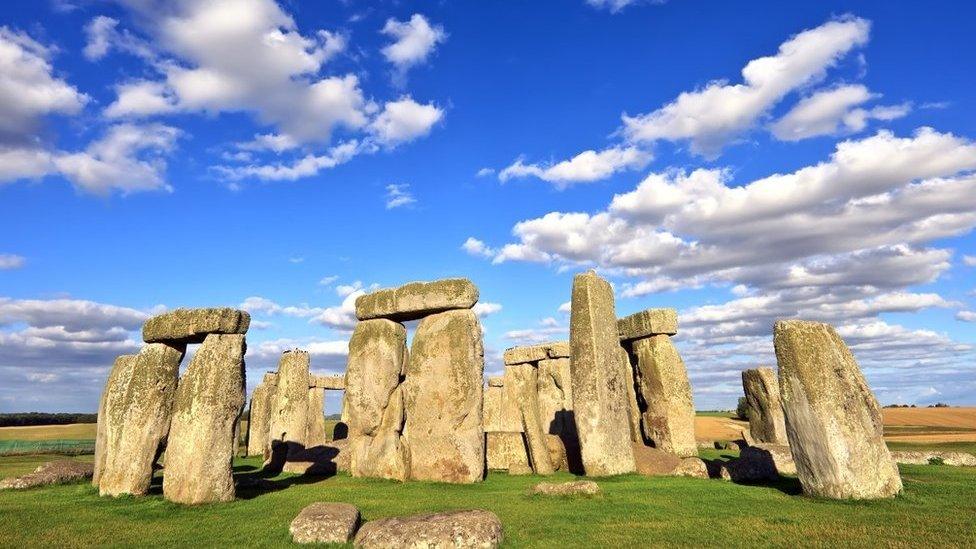Stonehenge boulder debate settled, scientists say

Bluestones are believed to have been among the first stones erected at Stonehenge about 5,000 years ago.
- Published
Boulders at Stonehenge were taken to the monument's site by humans, rather than dragged there by glaciers, new scientific research claims.
The ancient monument, near Salisbury in south-west England, was built with stones from all parts of Great Britain, including the smaller bluestone megaliths, most of which came from north Pembrokeshire, 140 miles (225km) away.
While many archaeologists believe the smaller bluestones from the Preseli Hills were transported by humans, others believe they were transported by glacial ice long before Stonehenge was built.
Now, a research team at Aberystwyth University says its work shows there is "no evidence" to support the ice transport theory.
The bluestones are believed to have been among the first erected at the Wiltshire site about 5,000 years ago.
The team's work focused on the so-called Newall Boulder, a 22x15x10cm rock excavated at Stonehenge in 1924 orginally from Craig Rhos-y-Felin in Pembrokeshire.
The boulder is now in the collection of the Salisbury Museum.
Famous Stonehenge stone came from Scotland not Wales
- Published14 August 2024
Was Stonehenge originally sited in Wales?
- Published12 February 2021
In an article published in the Journal for Archaeological Research, Prof Richard Bevins concludes there is "no evidence for ice extending as far south as Salisbury Plain", where the monument is located.
"New evidence allows us to reiterate our earlier interpretation that the boulder is not a glacial erratic but rather is derived from a fragmented monolith at Stonehenge [...] transported from Craig Rhos-y-Felin to Stonehenge by Neolithic people," the article says.
The team's work challenged a competing theory that the boulder was reduced in size and heavily modified during glacial transport, and was eventually dumped at or relatively close to the Salisbury Plain.

The Newall Boulder
The theory that the boulder's shape was changed by ice is supported by five arguments related to its shape, including its crude bullet shape top.
But Prof Bevin and his team said most of the characteristics cited "could be simply generated by surface weathering".
If the bluestones were transported by ice even part of the way from their source in west Wales towards Stonehenge, there should be erratics - rocks that have been transported by glaciers - from the Preseli Mountains in west and south Wales, they said.
And while there are erratics in some areas, "there is no record of the very distinctive spotted dolerite used at Stonehenge", the researchers said.
They added that the "total absence" of spotted dolorite - the distinctive rock known as bluestone - further east than the Narberth area in Pembrokeshire, and the evidence for Neolithic stone extraction at both Craig Rhos-y-Felin argue "strongly in favour of human transport".
Related topics
- Published6 July 2021

- Published20 December 2024

- Published2 August 2018
